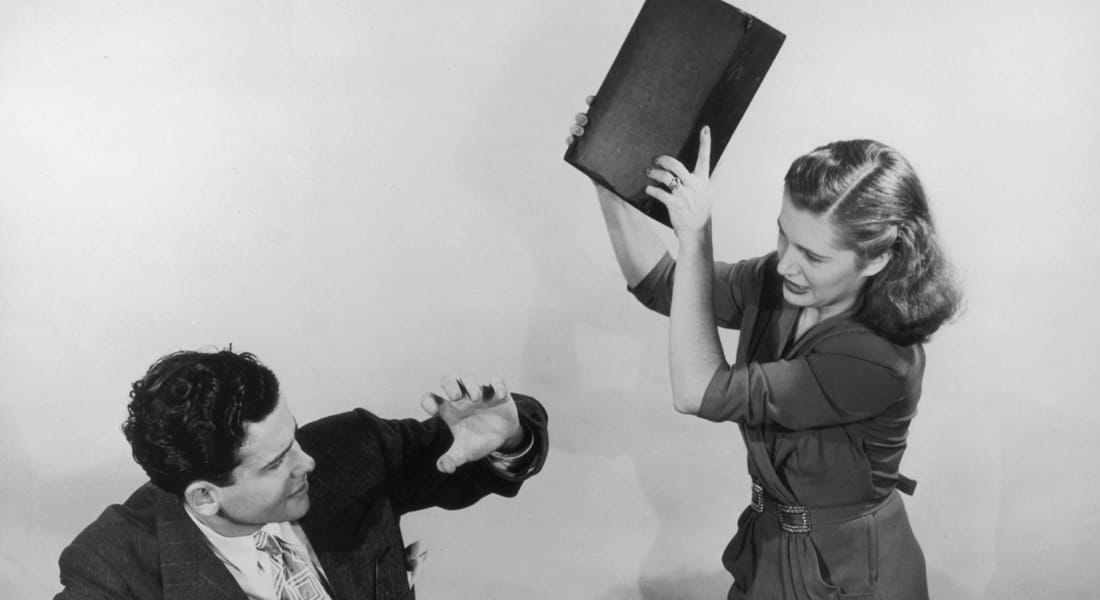دبي، الإمارات العربية المتحدة (CNN) -- لطالما اعتبرت الشهامة، والمروءة، من الأخلاق النبيلة التي يتميز بها الرجال، ما يفترض حرص هؤلاء على الاعتناء بالمرأة ومعاملتها بلطف وحذر شديدين. ورغم أن الافتراض القديم ينص على ضرورة دعم الرجال للجنس اللطيف في تنفيذ كل الأمور، إلا أن الأمر لم يعد كذلك في العصر الحديث.
وقد تبدو الشهامة حالياً بمثابة أمر مبالغ فيه بالنسبة إلى النساء العصريات، إذ يمكن أن تعتبر المرأة مبادرة الرجل الشهم دليلاً على اعتقاده بأنها مخلوق ضعيف لا حول ولا قوة له.
ومع ذلك، قد تحتاج المرأة إلى مبادرة الرجل بمعاملتها بلطف، ما يسمى بالمروءة العصرية، أو اللباقة من باب المجاملة.
ويظهر أن قواعد المروءة والشهامة تحتاج إلى صبغة عصرية حديثة، وفيما يلي أهم قواعد الآداب واللباقة القديمة والتغييرات التي ترى بعض النساء أنه يجب إدخالها إليها:
- القاعدة القديمة: دائماً "النساء أولاً" لدى المرور
وينطبق ذلك على تلك المواقف التي يسرع فيها الرجل إلى إمساك قبضة الباب، أو باب المصعد من أجل السماح للمرأة بالدخول قبله، إمرأة. وتحبذ النساء أن يتعامل الرجال على ذلك النحو من دون الحاجة للتباهي أمامهن، أو التحرش بهن.
القاعدة القديمة: الرجل دائماً يدفع
وتنص القاعدة العصرية أن المرأة يجب أن تدفع إذا طلبت ذلك. وغالباً، ما يحبذ الرجل الدفع، إذا كان يرافق امرأة. ولكن، غالبية النساء لا تحبذ فكرة قيام الرجل بذلك السلوك بسبب عدم شعورهن بالراحة. وتفضل المرأة المبادرة ودقع قيمة وجبة العشاء، إذا كانت هي من تقدمت بدعوة الرجل. ولا يعني ذلك، أن المرأة تريد أخذ زمام المبادرة في تلك الأمور، أو أن تحط من قدر الرجل، وإنما تعبر بذلك عن اللباقة في التعامل.
- القاعدة القديمة: اختيار نوع الطعام للمرأة
وتنص القاعدة العصرية على ضرورة عدم قيام الرجل بهذه الخطوة. ويذكر أن الامبراطور الفرنسي نابليون بونابرت هو أول من بدأ في ممارسة هذا التقليد، إذ لطالما قال: "إذا قمت بطلب الطعام لإمرأة بحدة، فهي لن تلاحظني فقط، بل ستراني طويل القامة." وتعكس هذه المقولة التي تعبر عن مبدأ اللباقة في طلب الطعام للمرأة حالة من جنون العظمة والعبثية. وتجد بعض النساء ذلك التصرف مهيناً، خصوصاً أنهن قادرات على الاختيار واتخاذ القرار حول نوع الطعام الذي يوددن تناوله. وترى تلك النساء أن الرجل إذا أراد أن يكون لطيفاً، يجب أن يسمح لهن باختيار طبقه أيضاً.
- القاعدة القديمة: ضع هاتفك بعيداً
وتنص القاعدة الحديثة على الأمر ذاته، وضرورة عدم انشغال الرجل بهاتفه خلال مجالسة المرأة، خصوصاً أن ذلك يسبب لها شعوراً بالإنزعاج.
- القاعدة القديمة: ضرورة الوقوف لدى دخول النساء
وأشارت القاعدة التقليدية إلى أن الوقوف للأشخاص عامة لدى دخولهم إلى الغرفة، يعتبر بمثابة الاحترام والتبجيل للملوك. وتنص القاعدة الحديثة على عدم ضرورة الوقوف للنساء، خصوصاً أن ذلك يشعر المرأة بأنها كبيرة في السن،
- القاعدة التقليدية: استخدام العنف للدفاع عن شرف المرأة
وتنص القاعدة العصرية على عدم ضرورة استخدام العنف للدفاع عن شرف المرأة، إذ لا تجد المرأة أن استخدام الرجل للعنف، لضرب رجلاً آخر قام بمغازلتها، عملاً بطولياً يعبر عن الرجولة الحقيقية. وتعتبر بعض النساء أن مثل تلك الأفعال ترتبط بمشاكل ذكورية عصبية، خصوصاً أن المرأة تتميز بالذكاء والقدرة على تخليص نفسها في مثل تلك المواقف غير المرغوبة.
